 W
WThe Republic of India has several official national symbols including a historical document, a flag, an emblem, an anthem, a memorial tower as well as several national heroes. The design of the national flag was officially adopted by the Constituent Assembly just before independence, on 22 July in 1947. Other symbols that were designated on various occasions include the national animal, bird, fruit and tree.
 W
WThe State Emblem of India is the national emblem of India and is used by the union government, many state governments and government agencies. The emblem is an adaptation of the Lion Capital of Ashoka, a statue from 280 BCE. The statue is a dimensional emblem showing four lions. It became the emblem of the Dominion of India in December 1947, and later the emblem of the Republic of India.
 W
WThe Ashoka Chakra is a depiction of the Dharma Chakra; a wheel represented with 24 spokes in Buddhism. It is so called because it appears on a number of edicts of Ashoka, most prominent among which is the Lion Capital of Ashoka. The most visible use of the Ashoka Chakra today is at the centre of the Flag of India, where it is rendered in a navy blue colour on a white background, replacing the symbol of charkha of the pre-independence versions of the flag.
 W
WA banyan, also spelled "banian", is a fig that begins its life as an epiphyte, i.e. a plant that grows on another plant, when its seed germinates in a crack or crevice of a host tree or edifice. "Banyan" often specifically denotes Ficus benghalensis, which is the national tree of India, though the name has also been generalized to denominate all figs that share a common life cycle and used systematically in taxonomy to denominate the subgenus Urostigma.
 W
WBhārat Mātā is a national personification of India (Bharat) as a mother goddess. In the visual arts she is commonly depicted dressed in a red or saffron-coloured sari and holding a national flag; she sometimes stands on a lotus and is accompanied by a lion.
 W
WThe Emblem of Goa is the official emblem of the Government of Goa, a state of India.
 W
WFicus benghalensis, commonly known as the banyan, banyan fig and Indian banyan, is a tree native to the Indian Subcontinent. Specimens in India are among the largest trees in the world by canopy coverage. It also known as the "strangler fig" because it starts out as epiphyte, that is, leaning on another tree that it ends up suffocating.
 W
WThe National Flag of India is a horizontal rectangular tricolour of India saffron, white and India green; with the Ashoka Chakra, a 24-spoke wheel, in navy blue at its centre. It was adopted in its present form during a meeting of the Constituent Assembly held on 22 July 1947, and it became the official flag of the Dominion of India on 15 August 1947. The flag was subsequently retained as that of the Republic of India. In India, the term "tricolour" almost always refers to the Indian national flag. The flag is based on the Swaraj flag, a flag of the Indian National Congress designed by Pingali Venkayya.
 W
WThe Ganges (in India: Ganga is a trans-boundary river of Asia which flows through India and Bangladesh. The 2,525 km river rises in the western Himalayas in the Indian state of Uttarakhand, and flows south and east through the Gangetic plain of North India into Bangladesh, where it empties into the Bay of Bengal. It is the third largest river on Earth by discharge.
 W
WThe Ganges river dolphin is a species of toothed whale classified in the family Platanistidae. It lives in the Ganges and related rivers of South Asia, namely in the countries of India, Nepal, and Bangladesh. It is related to the much smaller Indus river dolphin which lives in the Indus River in Pakistan.
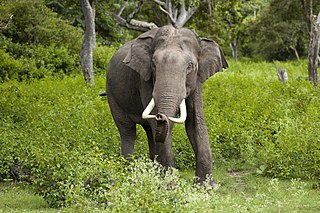 W
WThe Indian elephant is one of three extant recognised subspecies of the Asian elephant and native to mainland Asia.
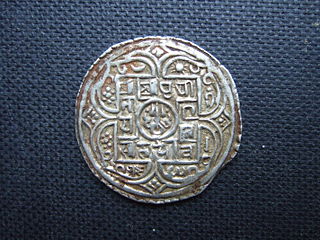 W
WThe Indian national calendar, sometimes called the Shaka calendar, is used, alongside the Gregorian calendar, by The Gazette of India, in news broadcasts by All India Radio and in calendars and communications issued by the Government of India.
 W
WJana Gana Mana is the national anthem of India. It was originally composed as Bharoto Bhagyo Bidhata in Bengali by polymath Rabindranath Tagore. The first stanza of the song Bharoto Bhagyo Bidhata was adopted by the Constituent Assembly of India as the National Anthem on 24 January 1950. A formal rendition of the national anthem takes approximately 52 seconds. A shortened version consisting of the first and last lines is also staged occasionally. It was first publicly sung on 27 December 1911 at the Calcutta Session of the Indian National Congress.
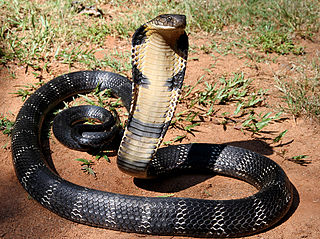 W
WThe king cobra is a venomous snake species of elapids endemic to jungles in Southern and Southeast Asia. The sole member of the genus Ophiophagus, it is distinguishable from other cobras, most noticeably by its size and neck patterns. The king cobra is the world's longest venomous snake, with an average length of 3.18 to 4 m, reaching a maximum of 5.85 m (19.2 ft). Its skin colour varies across the habitats, from black with white stripes to unbroken brownish grey. It preys chiefly on other snakes, including its own species. Unlike other snakes, it rarely hunts non-reptile vertebrates, such as rodents and lizards.
 W
WThe Lion Capital of Ashoka is a sculpture of four Asiatic lions standing back to back, on an elaborate base that includes other animals. A graphic representation of it was adopted as the official Emblem of India in 1950. It was originally placed on the top of the Ashoka pillar at the important Buddhist site of Sarnath by the Emperor Ashoka, in about 250 BCE during his rule over the Maurya Empire. The pillar, sometimes called the Aśoka Column, is still in its original location, but the Lion Capital is now in the Sarnath Museum, in the state of Uttar Pradesh, India. Standing 2.15 metres high including the base, it is more elaborate than the other very similar surviving capitals of the pillars of Ashoka bearing the Edicts of Ashoka that were placed throughout India several of which feature single animals at the top; one other damaged group of four lions survives, at Sanchi.
 W
WMangifera indica, commonly known as mango, is a species of flowering plant in the sumac and poison ivy family Anacardiaceae. Mangoes are believed to have originated from the region between northwestern Myanmar, Bangladesh, and India. It is a large fruit-tree, capable of growing to a height and crown width of about 30 metres (100 ft) and trunk circumference of more than 3.7 metres (12 ft).
 W
WNanda Devi is the second highest mountain in India after Kangchenjunga and the highest located entirely within the country. It is the 23rd-highest peak in the world.
 W
WNelumbo nucifera, also known as Indian lotus, sacred lotus, or simply lotus, is one of two extant species of aquatic plant in the family Nelumbonaceae. It is sometimes colloquially called a water lily, though this more often refers to members of the family Nymphaeaceae.
 W
WPeafowl is a common name for three bird species in the genera Pavo and Afropavo within the subtribe Pavonina of the family Phasianidae, the pheasants and their allies. Male peafowl are referred to as peacocks, and female peafowl are referred to as peahens, even though peafowl of either sex are often referred to colloquially as "peacocks".
 W
WThe Indian peafowl, also known as the common peafowl, and blue peafowl, is a peafowl species native to the Indian subcontinent. It has been introduced to many other countries.
 W
WThe Prevention of Insults to National Honour Act, 1971 is an Act of the Parliament of India which prohibits the desecration of or insult to the country's national symbols, including the National Flag, the constitution, the National Anthem and map of India including contempt of Indian constitution.
 W
WSatyameva Jayate is a part of a mantra from the Hindu scripture Mundaka Upanishad. Following the independence of India, it was adopted as the national motto of India on 26 January 1950, the day India became a republic. It is inscribed in the Devanagari script at the base of the Lion Capital of Ashoka and forms an integral part of the Indian national emblem. The emblem and the words "Satyameva Jayate" are inscribed on one side of all Indian currency and national documents.
 W
WA spinning wheel is a device for spinning thread or yarn from fibres. It was fundamental to the cotton textile industry prior to the Industrial Revolution. It laid the foundations for later machinery such as the spinning jenny and spinning frame, which displaced the spinning wheel during the Industrial Revolution.
 W
WThe Statue of Unity is a colossal statue of Indian statesman and independence activist Vallabhbhai Patel (1875–1950), who was the first deputy prime minister and home minister of independent India and an adherent of Mahatma Gandhi during the nonviolent Indian independence movement. Patel was highly respected for his leadership in uniting 562 princely states of India with a major part of the former British Raj to form the single Union of India. The Statue of Unity is the world's tallest statue, with a height of 182 metres. It is located in the state of Gujarat, India, on the Narmada River in the Kevadiya colony, facing the Sardar Sarovar Dam 100 kilometres (62 mi) southeast of the city of Vadodara and 150 kilometres (93 mi) from the city of Surat. Kevadia railway station is 5 kilometres (3.1 mi) from the statue.
 W
WThe tiger is the largest living cat species and a member of the genus Panthera. It is most recognisable for its dark vertical stripes on orange fur with a white underside. It is an apex predator, primarily preying on ungulates such as deer and wild boar. It is territorial and generally a solitary but social predator, requiring large contiguous areas of habitat, which support its requirements for prey and rearing of its offspring. Tiger cubs stay with their mother for about two years, then become independent and leave their mother's home range to establish their own.
 W
WThe Bengal tiger, also known as the Royal Bengal tiger, is a tiger from a specific population of the Panthera tigris tigris subspecies that is native to the Indian subcontinent. It is threatened by poaching, loss, and fragmentation of habitat, and was estimated at comprising fewer than 2,500 wild individuals by 2011. None of the Tiger Conservation Landscapes within its range is considered large enough to support an effective population of more than 250 adult individuals. India's tiger population was estimated at 2,603–3,346 individuals by 2018. Around 300–500 tigers are estimated in Bangladesh, 220–274 tigers in Nepal and 103 tigers in Bhutan.
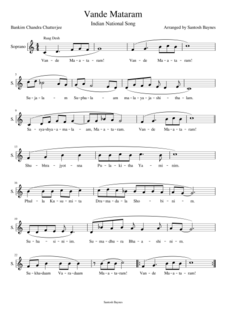 W
WVande Mataram is a poem written in Bengali by Bankim Chandra Chatterjee in 1870s, which he included in his 1882 Bengali novel Anandamath. The poem was first sung by Rabindranath Tagore in the 1896 session of the Indian National Congress. The first two verses of the song were adopted as the National Song of India in October 1937 by the Congress Working Committee prior to the end of colonial rule in August 1947.
 W
W W
W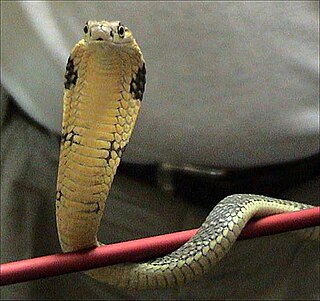 W
W